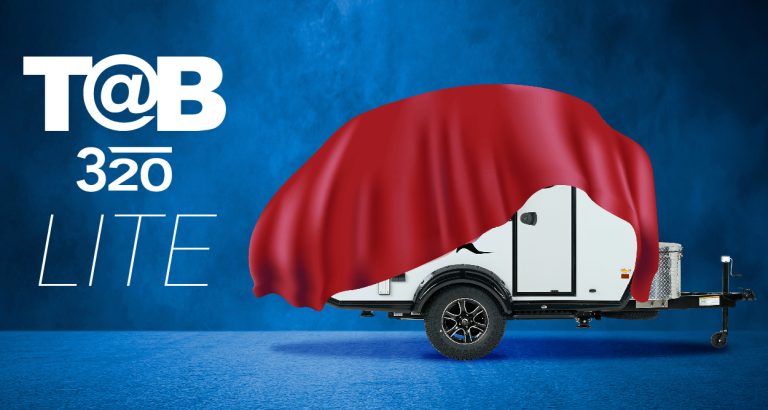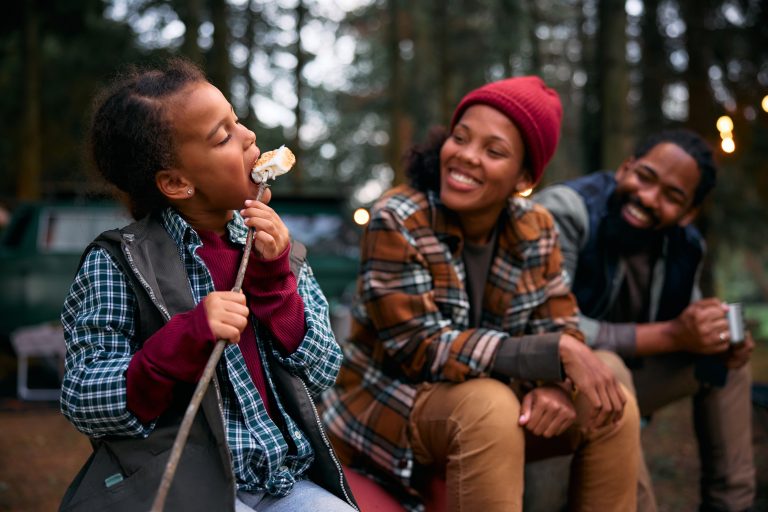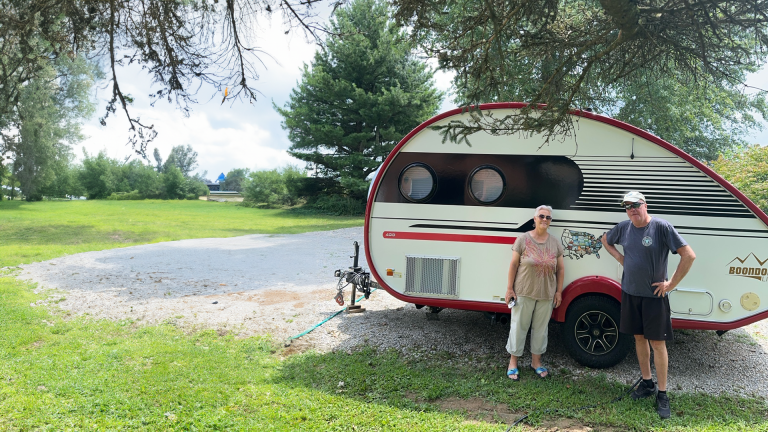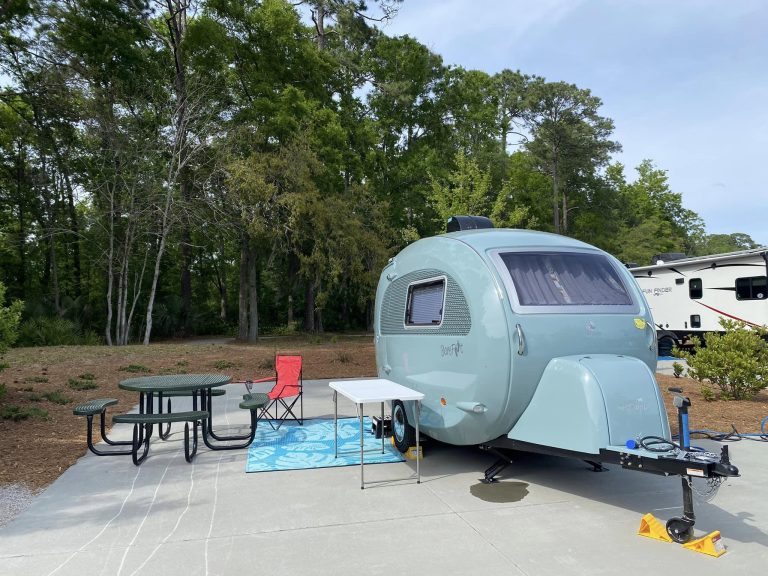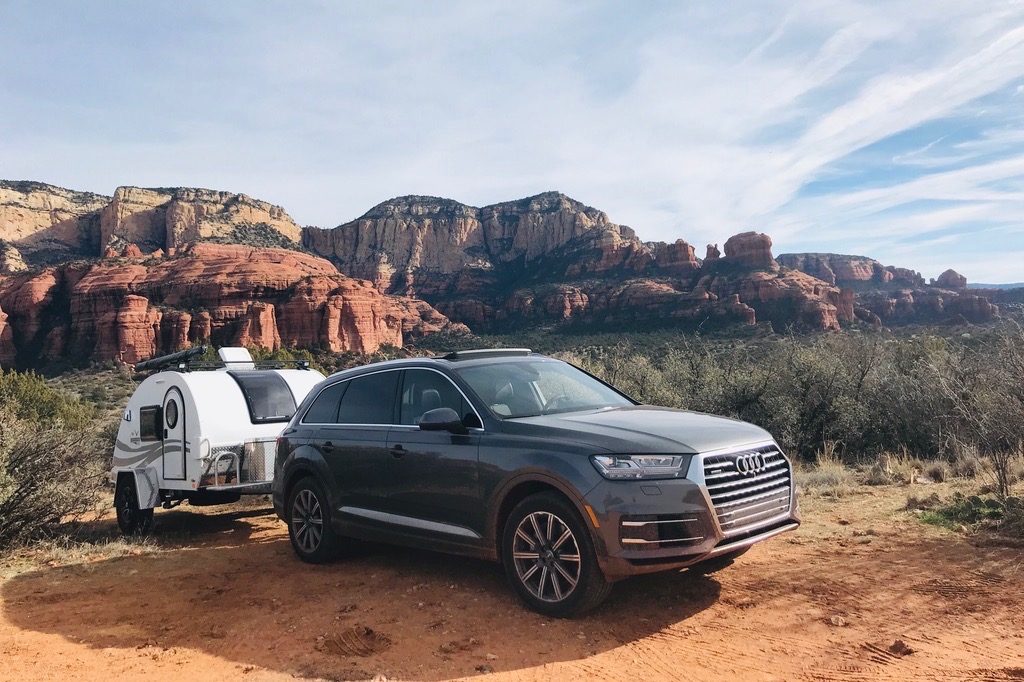You’ve chosen your camper, scheduled the pick-up date, and are now eagerly plotting your first road trip, excited to be part of the camper community. But before you turn the key and pull out of your driveway, take a moment to review these novice RVer driving tips, gathered from various RV experts.
Take a class.
While it’s always a good plan to do some short practice runs with your rig before you start on your highway adventure, taking an RV class would be an even better idea, especially if you’re used to driving a compact car. And, depending on your insurance company, you may also be eligible for a discount for taking the course.
KOA highlights some of what you can expect in an RV driving course: how to weigh your RV, hitch and unhitch the trailer and tow car, and back into a campsite. Depending on the course, it may also cover basic RV care, use of the equipment it comes with, and maintenance of the holding tanks.
But even after you’ve put several hundred miles on your rig, it’s still worth it to sit in on a class or two, notes Curtis Carper in RV Driver Training: It’s Worth Going Back to School!, adding that when he has attended RV seminars or training events, he always learns something new. Some of the RV driver training schools he lists in his post are RV Basic Training Boot Camp, Dick Reed’s RV Driving School and RV Safety & Education Foundation (RVSEF) that offers an online school (RV Academy) as well as live training seminars at RV shows, rallies or events.
Don’t crowd the roadway.
Even if your camper is the smallest size teardrop, its length plus your tow vehicle’s length translates to you taking up a fair bit of space in your lane. RVing.how recommends using the right lane wherever possible and allowing plenty of space between your vehicle and the car ahead of you. While the three-second rule is typically used to gauge a safe distance between vehicles, Travelers Risk Control recommends increasing the distance when driving a larger vehicle or towing a trailer. Remember, it will take longer for you to make an unexpected stop, so the more feet between you and the vehicle ahead, the less chance of an unintended encounter with its rear end.
Remember what you’re driving—or pulling.
Whether you’ve pulled a towable or driving a motorhome, you’ve got to up your game when you’re on the road. Everything takes more: braking takes more time, cornering takes more turning radius, and merging takes, as DMV.org puts it, more patience. As noted above, increase the distance between your rig and the vehicle ahead of you, and slow down sooner than you normally would if you know you’ll soon be stopping or turning. As for cornering, DMV.org suggests pulling farther into the intersection before starting your turn, so you’ll be able to stay in your own lane and not go over the curb.
Depending on your camper, you might also need more vertical space—something to keep in mind if the road ahead has areas of low clearance. Numbers you need to know are the height of your camper (including anything that is mounted to the roof) and the maximum allowed by tunnels, bridges, parking garages, and overpasses that you might encounter on your route. Learn what’s ahead by using a road atlas for RV or truck drivers to review your trip.
Park politely.
Another tip from RVing.how covers parking etiquette when you’re stopping at a store or restaurant. Don’t park near the entrance or in such a way that your rig becomes a visual obstruction for other vehicles or pedestrians. Check where other large vehicles (tractor-trailers or other campers) are parked and use that same area.
Follow the 230 rule.
This tip is from Mike Wendland and refers to when you should call a halt to your travels: after you have driven 230 miles or when it’s 2:30 in the afternoon. (Mike says you can also do the “300” variation: 300 miles or 3 PM.) The idea is to make sure you stop before you get too tired, to avoid the risk of having a drowsy-driving accident. According to the National Safety Council, you are three times more likely to be in a car crash if you are fatigued. Or you might experience micro-sleep (short, involuntary periods of inattention) and during those four or five seconds moving at highway speed, your rig can travel the length of a football field.
Ending your day’s drive while you’re still fully awake reduces the risk of having an accident on the road. Besides, you want to pull into the campsite while there’s still plenty of daylight so you can see what you’re doing!
Recent Articles
